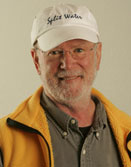 |
Bio-Inspired Energy Security for Planet Earth
Fossil fuels are the legacy of ancient photosynthesis and, thermodynamically, are the gold standard for energy content per volume of fuel material, excluding nuclear processes. Moreover, the kinetics for accessing this stored energy are well developed and facile: turn the key, the car starts; light the boiler, industry comes to life. Societies spanning all developmental levels have based their energy infrastructures on fossil fuels or unsustainably consumed firewood. We learn from Jared Diamond's Collapse how the nature of humans seems to compel them to easy, which usually means unsustainable, energy production and consumption.
Now, faced with the reality of anthropogenic climate change—a problem facing humanity that is no less significant than war, famine, disease, overpopulation, the plight of refugees and the guarantee of human rights across the lands—humans must find sustainable ways to power their societies. This process is complicated by the energy needs of developing regions and their inclination to follow the example set by First World societies. Actually, First World involvement is much more than by example as, for the most part, the core business models of major energy-intense companies are predicated on bringing fossil fuel based industry to the developing world.
In order to ameliorate environmental damage, there must be a sea change in the human business model. Fortunately, Nature has thrown us a lifeline. Solar energy provides the biosphere with over 1024 J year−1, making human needs of even a projected 1021 J year−1 a deceptively achievable goal. [For a further discussion of this issue, please click here.] One key to global-scale use of solar energy is the synthesis of energy-rich fuel materials such as hydrogen and reduced carbon compounds. The latter have the almost inestimable advantage that the energy infrastructure for distribution and use is in place.
The photosynthetic and respiratory enzymes provide paradigms for all of the important energy converting processes humans would need to achieve sustainable energy production and use. For example, H2/air fuel cell efficiency is limited by the overpotential at the oxygen-reducing cathodic electrode. The best human-made catalysts for O2 reduction are platinum based and, in addition to high overpotentials at even modest current levels, there is probably not sufficient platinum in the Earth's crust to fabricate terawatt-level energy converting devices. Nature's fuel cells, the mitochondrial energy-transducing membranes, operate at near thermodynamic limit of efficiency using copper and iron at their active sites. In the final analysis, sustainable production of energy rich fuels must involve water oxidation, the reverse of combustion, and once again Nature knows how to do it efficiently. Commercial electrolyzers, even with the best platinum-based catalyst, operate at close to 2 V. Nature's photosynthetic reaction centres using Mn-based catalysts operate at slightly over 1 V. This represents a huge saving in electromotive force, a commodity that must be produced sustainably from solar, wind, geo, hydro, and other sources.
The challenge is clear: we must understand the structures and chemical reactivity of these catalytic sites and co-opt their essential features for human use.
Thomas A. Moore, Ph.D.
Director, ASU Center for Bioenergy & Photosynthesis
|
A transdisciplinary center affliated with College of Liberal Arts and Sciences Ira A. Fulton School of Engineering
|
Center for Bioenergy & Photosynthesis Arizona State University, Box 871604, Room ISTB-5 101, Tempe, AZ 85287-1604 phone: (480) 965-1963, fax: (480) 965-5927 26-Jun-2013 26-Jun-2013 |

